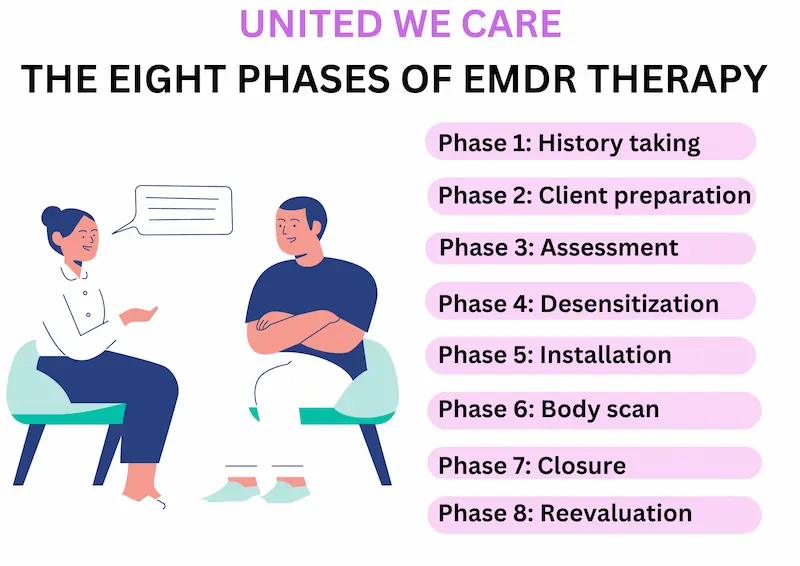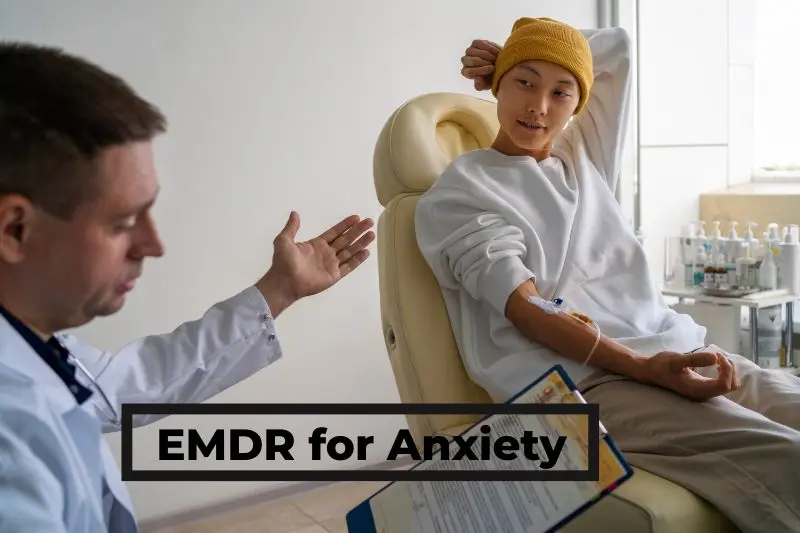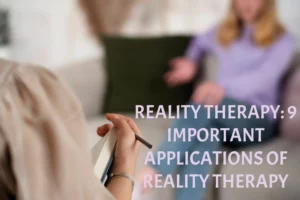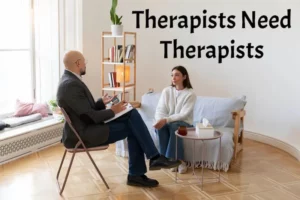Introduction
Are you or your loved one struggling with anxiety? You’re not alone. Anxiety disorders impact nearly 30% of adults worldwide at some point in their lives. [1] Whether it’s the kind of society we’re part of, our genetic makeup, or the lifestyle choices we consciously or unconsciously make, every aspect can contribute significantly to overwhelming stress and anxiety. The good news is that anxiety disorders are treatable, and Eye Movement Desensitization and Reprocessing (EMDR) for anxiety is an effective treatment option.
While your fear is a natural response to an immediate threat, what makes anxiety concerning is that this fear anticipates future concerns and is often disproportionate. This anticipation can disrupt your ability to function normally, leading you to avoid situations that trigger anxiety.
Various anxiety disorders exist, including panic disorders, phobias, and social anxiety disorders. Depending on the disorder’s type and severity, a combination of therapy and medication proves effective. In this blog, we’ll discuss EMDR as a treatment for anxiety, how it works, its efficacy, and where to find it.
What is EMDR?
Developed by Francine Shapiro in 1987, eye movement desensitization and reprocessing is a structured therapy that encourages the client to focus on the trauma memory for a brief period of time while simultaneously experiencing bilateral stimulation (BLS) of the brain through eye movements. The BLS is linked to a reduction in the vividness and emotion associated with the trauma memories. [2] The EMDR process usually takes 6-12 sessions, and the therapist asks the client to rate their level of distress before, during, and after each session. EMDR is used to treat post-traumatic stress disorder (PTSD), anxiety disorders, eating disorders, and addictions.
Dual Awareness A key Element In EMDR therapy
Dual awareness is a key element in EMDR therapy. It is the ability to pay attention to more than one experience at the same time. When one is overwhelmed with a flashback or an anxious thought, they are half present in the past or future. By practicing dual awareness, the other half can be in the present, which can help manage overwhelming feelings and sensations. By developing dual awareness, one can become an observer of oneself while experiencing something distressing, which can eventually help the painful feelings fade away.
Window Of Tolerance In EMDR
In EMDR, the window of tolerance is a concept that refers to the level of arousal at which a person can perform optimally. In this window, even though you may be experiencing overwhelming emotions, you can still function without being taken over by those feelings. EMDR therapists help clients find the balance between emotional activation and regulation while reprocessing distressing memories or emotions, keeping the clients within their window of tolerance.
How EMDR Helps To Treat Anxiety
The EMDR therapy follows a systematic 8-phase approach [3] to relieve physical symptoms of anxiety such as stomach cramps, lightheadedness, and shaky and sweaty hands. Through the process of EMDR, one can learn to safely reprocess their traumatic and distressing memories and thoughts, which can help them take back control of their thoughts, feelings, and behaviors.
The Eight Phases Of EMDR Therapy

Phase 1: History taking
In this phase, the therapist and the client collaborate to determine the desired outcomes, in addition to taking the client’s complete history.
Phase 2: Client preparation
The therapist then explains the process and techniques of the therapy to the client. The therapist will also teach the client techniques such as butterfly hug, the container exercise, protector figures exercise, etc., that would help the client feel more comfortable.
Phase 3: Assessment
The therapist and client determine and work on the most traumatic or distressing memory by identifying the irrational or negative beliefs around it. Positive alternatives to them are then explored.
Phase 4: Desensitization
The client concentrates on the memory from the previous phase while practicing a set of eye movements. The client communicates if they’ve gained new clarity, and this exercise is continued until the memory is no longer distressing to the client.
Phase 5: Installation
In this phase, the BLS is given while the client holds the traumatic image but recites the new positive beliefs discussed previously.
Phase 6: Body scan
The therapist asks the client to track their physical sensations to understand how they’re responding to the treatment. If any unpleasant sensations persist, more sessions may be required.
Phase 7: Closure
The calming and soothing exercises discussed in Phase 2 are reviewed and practiced again, along with a discussion on what to expect between the sessions.
Phase 8: Reevaluation
The therapist and client assess which parts of the treatment were most effective, review progress, and identify new targets, if any.
Why do we need EMDR for anxiety?
Eye movement desensitization and reprocessing is an effective treatment for anxiety. According to a 2020 meta-analysis involving 17 trials and 647 participants that investigated the effectiveness of EMDR in reducing symptoms of anxiety disorders, it was found that EMDR significantly reduced anxiety, panic, phobia, and behavioral/somatic symptoms. [4]
How do we get EMDR for anxiety?
EMDR can be self-administered once the client has enough orientation and understands how it works. Hence, it is crucial to find a therapist trained in EMDR and go through the process with them to get the most benefits. EMDR is also offered virtually with the same therapeutic process, with the advantage of more accessibility. A 2022 study compares the efficacy of virtual EMDR with in-person EMDR in a primary care setting and found both to be equally effective in the treatment of anxiety. [5]
Conclusion
Experiencing anxiety can be debilitating as it can impact your daily life. Eye movement desensitization and reprocessing therapy are effective in treating anxiety through its 8-phase protocol. EMDR can be assessed online as well as in person. If you or someone you know is dealing with overwhelming anxiety, consider reaching out for professional help. Book a session with one of our mental health experts at United We Care, who can help you in developing healthier coping strategies for your fears.
References
[1] American Psychiatric Association, “What Are Anxiety Disorders?” [Online]. Available: https://www.psychiatry.org/patients-families/anxiety-disorders/what-are-anxiety-disorders#. Accessed: Jan. 17, 2024.
[2] Myer, C. S. (2004). Case Studies in Abnormal Psychology. [Online]. Available: https://mcpl.aspendiscovery.org/GroupedWork/7230c6fe-5259-49ca-4bef-d4402034eb8a-eng. Accessed: Jan. 17, 2024.
[3] Maunder, R., Hunter, J. J., Maunder, M., & Arbuckle, K. (2021). “A Preliminary Study of a Novel Psychotherapeutic Technique for Social Anxiety Disorder: Augmented, Intelligence-Augmented Psychotherapy (A-IAPT).” Frontiers in Psychology, 12, 660753. https://doi.org/10.3389/fpsyg.2021.660753. Accessed: Jan. 17, 2024.
[4] Deacon, B. J., Lickel, J. J., Farrell, N. R., Kemp, J. J., Hipol, L. J., & Ma, J. (2020). “Therapist Reactions to Exposure and Cognitive Therapy for Anxiety: Factor Structure, Construct Validity, and Implications for the Cognitive-Behavioral Therapy for Anxiety.” Journal of Consulting and Clinical Psychology, 88(7), 635–646. https://doi.org/10.1037/ccp0000476. Accessed: Jan. 17, 2024.
[5] Secemsky, E. A., Chou, W., Datta, S. K., Lee, J., Nandigam, V., Fan, Y., & Tanasanvimon, S. (2022). “Digital Therapeutics for Treating Social Anxiety Disorder: Systematic Review and Meta-analysis.” Telemedicine and e-Health, 28(4), 474–483. https://doi.org/10.1089/tmj.2021.0454. Accessed: Jan. 17, 2024.










